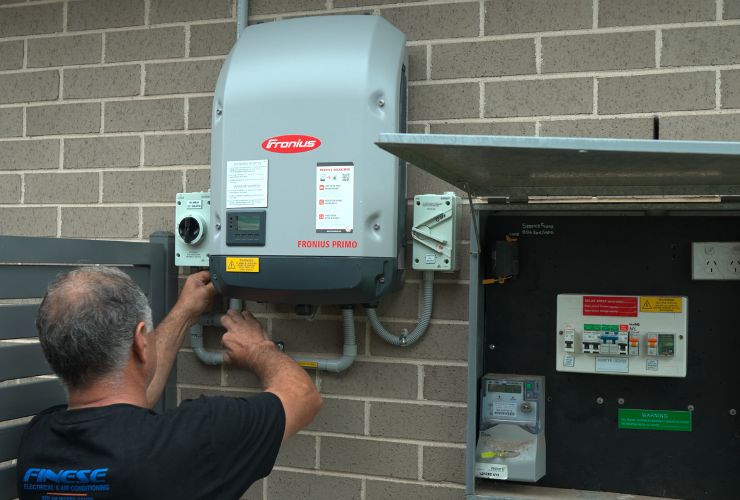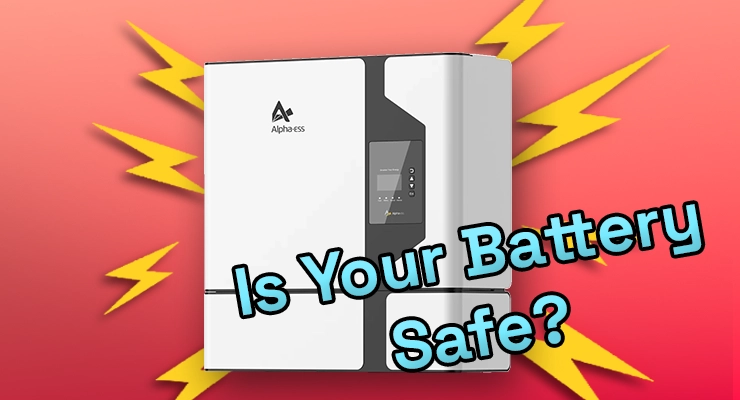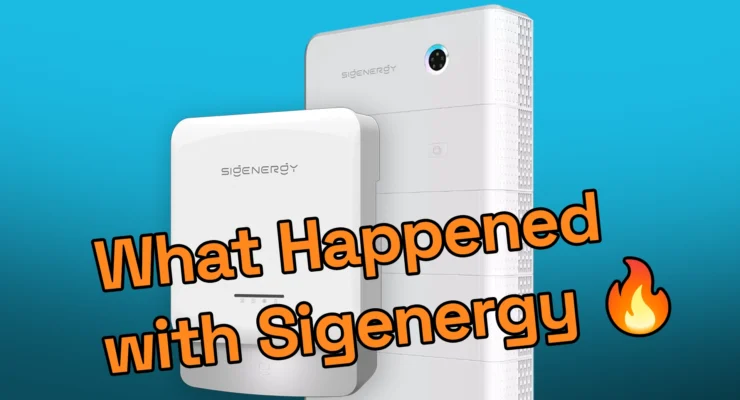Fast read
Home batteries are protected from grid voltage fluctuations by their smart inverters, which shut down to prevent damage. These shutdowns, increasingly common in Australia due to high solar penetration, can interrupt charging and discharging, impacting your energy savings. Modern inverters must adhere to strict standards designed to stabilize grid voltage, and persistent issues usually indicate a local grid problem that network providers must investigate.
Is Your Home Battery Safe From Grid Fluctuations?
If you own or are considering a home battery, it’s natural to worry about how the unpredictable nature of the electricity grid might affect your significant investment. You might have heard stories of solar systems tripping off on very sunny days and wondered if the same thing happens to batteries. It’s a valid concern, especially as voltage fluctuations on Australia’s grid become more common.
This article will walk you through what voltage fluctuations are, how your battery system is designed to handle them, and what you can do if you suspect they are impacting your home’s energy independence.
What are voltage fluctuations and what causes them?
Voltage is like the pressure in a water pipe that pushes electricity through the power lines to your home. In Australia, the official standard for this pressure is 230 volts, but it’s allowed to vary within a specific range: from 6% below (216.2V) to 10% above (253V). Minor fluctuations within this range are a normal part of any electricity grid’s operation.
However, several factors can push the voltage outside these normal limits:
- High Solar Penetration: On sunny days, thousands of rooftop solar systems export large amounts of energy to the grid at once. To send power out, each system’s inverter must operate at a slightly higher voltage than the grid itself. The cumulative effect can raise the local grid voltage significantly, sometimes pushing it above the acceptable 253V limit.
- Grid Infrastructure: Our grid was originally designed for a one-way flow of electricity from large power stations to consumers. The rise of two-way power flow from residential solar can strain this older infrastructure, leading to voltage management challenges.
- Proximity to Transformers: Your home’s distance from the local distribution transformer can influence the voltage you receive. Homes closer to the transformer often get slightly higher voltage to ensure that homes further down the line don’t receive voltage that is too low.
- Faulty Wiring: In some cases, issues within your own home’s wiring, such as undersized or loose cables, can contribute to voltage problems.
The critical role of your battery’s inverter
The most important thing to understand is that your home battery is not directly exposed to the grid’s voltage fluctuations. Instead, it is managed and protected by its inverter—the brains of your entire solar and battery system.
Modern hybrid inverters have sophisticated safety mechanisms built in, mandated by the current Australian Standard, AS/NZS 4777.2:2020. This standard became mandatory for all new installations in December 2021 and requires inverters to continuously monitor grid voltage to protect both the battery and the grid.
If the grid voltage rises too high or drops too low, the inverter will take protective action. Under the current standard, if the voltage exceeds a default of 258V as a 10-minute average, the inverter must disconnect from the grid to protect itself. In more extreme cases, like a surge to 265V, it will disconnect almost instantly. This shutdown prevents potentially damaging voltage from reaching your battery or other household appliances.
So, while fluctuations can cause your system to temporarily stop working, they are unlikely to cause direct physical damage to your battery cells thanks to these mandatory safety features.

How do different technologies handle this?
While all compliant inverters protect the battery, the latest standards have made advanced voltage management features a requirement for everyone.
- Volt-Watt and Volt-Var Modes: Under the AS/NZS 4777.2:2020 standard, it is now mandatory for all new inverters in Australia to have power quality response modes. Instead of just shutting down abruptly when the voltage gets high, they must be able to proactively reduce their power output (Volt-Watt mode) or manage reactive power (Volt-Var mode) to help stabilise the local grid voltage. This significantly reduces the number of complete shutdowns, allowing your system to operate more consistently.
- Integrated Systems: All-in-one systems, where the inverter and battery are designed as a single package, can offer highly coordinated responses. For example, a system from Tesla or Sigenergy is engineered for seamless communication between all components, optimising its reaction to grid disturbances. The Tesla Powerwall, for instance, can quickly detect a grid outage or anomaly and switch to providing backup power to the home.
What are the real impacts of frequent shutdowns?
Even though your battery is protected from damage, frequent shutdowns caused by voltage fluctuations are still a problem. When your inverter trips, it stops performing its key functions:
- No Charging: Your battery cannot charge from your excess solar power.
- No Discharging: It cannot discharge to power your home or export to the grid.
- Lost Savings: Ultimately, every minute your system is offline is a minute you aren’t generating, storing, or using your own clean energy, which can impact your feed-in tariff credits and energy savings.
Signs that you might have a voltage problem include seeing frequent over-voltage errors on your inverter display, or noticing your system is not producing or storing as much energy as you’d expect on bright, sunny days.
What to do if you suspect a voltage issue
If you believe grid voltage fluctuations are frequently causing your battery system to shut down, there are a few clear, actionable steps you can take.
- Check your system performance: Use your system’s monitoring app to look for patterns. Do the shutdowns coincide with sunny days around midday? Do you see specific fault codes on the inverter? Documenting this information will be very helpful.
- Contact your original installer: Your first call should be to the accredited professional who installed your system. They can analyse your system’s data, check your home’s wiring to ensure it’s not contributing to the problem, and verify that your inverter’s settings are correctly configured for your local grid conditions according to the AS/NZS 4777.2:2020 standard.
- Involve your network provider: Your local Distribution Network Service Provider (DNSP) has a legal obligation to ensure the voltage they supply to your property is within the national standards. If your installer confirms the issue is with the grid, they can help you contact your DNSP. The provider may need to install a monitor to investigate the local voltage levels and, if a persistent problem is found, they are required to fix it, often by adjusting the settings at the local transformer.
A final word of reassurance
It’s important to remember that voltage fluctuations are a known challenge in Australia’s modernising energy landscape. Your home battery system has been designed with this in mind, equipped with robust, mandatory safety features to protect your investment.
While frequent shutdowns can be frustrating, they are a sign that your system is doing its job correctly by prioritising safety. By working with a qualified installer and your local network provider, these issues can almost always be diagnosed and resolved, ensuring you get the maximum benefit from your home energy storage system. It’s also worth noting that these standards continue to evolve, with an amendment (Amd 2:2024) to the inverter standard set to take effect in August 2025 to further improve how systems interact with the grid.
If you need assistance finding an accredited solar and battery expert in your area to help diagnose these issues, Your Energy Answers provides a free service to connect you with trusted, local professionals.




